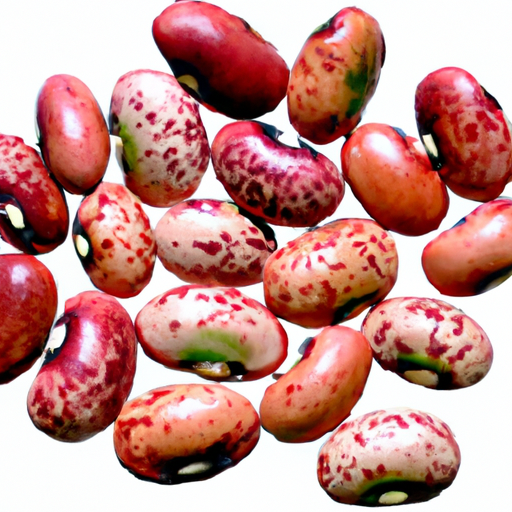Exploring the Delicious World of Corona Beans
With their creamy texture and delicate flavor, corona beans are a true culinary treasure. This versatile legume, also known as borlotti or cranberry beans, is a staple ingredient in Italian cuisine. Whether you’re a seasoned chef or an adventurous home cook, corona beans are worth adding to your pantry. In this blog post, we’ll dive into everything you need to know about these delightful beans - from their taste and common uses to their nutritional value and interesting history.
Taste and Texture
Corona beans are renowned for their creamy, buttery texture and subtle nutty flavor. They have a smooth, thin skin that cooks to a tender consistency, making them a delightful addition to soups, stews, salads, or even served on their own. When cooked, their color transitions from pinkish-red speckles to a more muted beige, giving them a visually appealing appearance.
Common Uses in Cooking
Corona beans lend themselves beautifully to a wide range of culinary creations. They are typically soaked overnight before cooking, which helps to soften them and reduce cooking times. In Italian cuisine, they are often used in classic dishes like pasta e fagioli, a heartwarming soup with tomato, pasta, and beans. You can also toss them into salads or use them as a filling for vegetarian wraps and burritos.
For an elevated take on comfort food, corona beans can be pureed into a velvety spread, perfect for slathering on crusty bread. Additionally, their delicate flavor makes them an excellent companion to fresh herbs, garlic, and lemon zest, allowing you to create tantalizing dips and side dishes.
Nutritional Value
In addition to their delicious taste, corona beans are packed with nutrition. They are an excellent source of plant-based protein and dietary fiber, which helps keep you feeling satisfied and promotes overall digestive health. These beans are also rich in essential minerals like potassium and iron, along with various B vitamins. Moreover, they are naturally low in fat and cholesterol, making them a nutritious choice for those seeking a balanced diet.
Interesting History and Facts
Corona beans have a captivating history that dates back centuries. Originating in Italy, they were named after the Italian word “corona,” meaning crown, due to the bean’s resemblance to a crown with its mottled coloration. These beans have been cultivated in the Mediterranean region for centuries, often making appearances in traditional Italian dishes.
Throughout time, corona beans have gained popularity for their versatility and delicious taste. They have even found their way into the culinary traditions of regions beyond Italy, captivating the taste buds of food enthusiasts worldwide.
Bringing Corona Beans to Your Kitchen
Now that you know all about the wonders of corona beans, it’s time to bring this delightful ingredient into your own kitchen. Whether you’re cooking a comforting bowl of soup, adding a protein boost to your salads, or experimenting with new flavors, corona beans are sure to elevate your dishes to new heights.
Next time you’re in search of a versatile legume that brings a creamy texture and delightful flavor to any meal, look no further than corona beans. With their rich nutritional value, interesting history, and mouthwatering taste, these beans are a must-have in any food lover’s pantry. So, grab a bag of corona beans, immerse them in water for a good soak, and let your culinary creativity take flight!
Corona beans
Origin: Corona beans, also known as borlotti beans, originate from Italy, where they have been cultivated for centuries. They are especially popular in Italian cuisine.
Common uses: Corona beans are versatile and can be used in a variety of dishes. They are often used in soups, stews, salads, and pasta dishes. In Italy, they are commonly used in the traditional dish known as pasta e fagioli.
Nutritional benefits: Corona beans are a good source of protein, fiber, and essential nutrients. They are low in fat and cholesterol-free. They are also rich in folate, potassium, iron, and magnesium.
Unique properties: Corona beans are large, kidney-shaped beans with a creamy texture and an earthy, nutty flavor. They have beautiful speckled pinkish-red markings on their exterior, which fade when cooked. This unique appearance makes them visually appealing in dishes.
Historical significance: Archaeological evidence suggests that beans similar to corona beans have been consumed in ancient civilizations for thousands of years. The cultivation of corona beans in Italy dates back to at least the early 16th century. In Italian cuisine, corona beans have been a staple ingredient, valued for their versatility and taste.
Remember to cook corona beans thoroughly before consuming, as raw beans can be toxic. Also, keep in mind that the name “corona beans” may sometimes refer specifically to a particular strain of borlotti beans grown in California.




Use the share button below if you liked it.
It makes me smile, when I see it.